Skip to main content
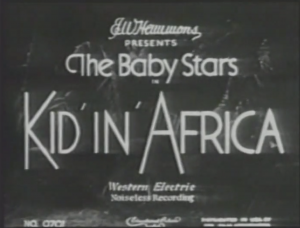
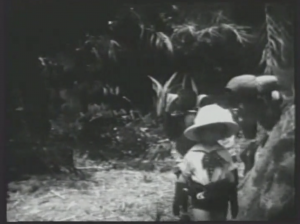
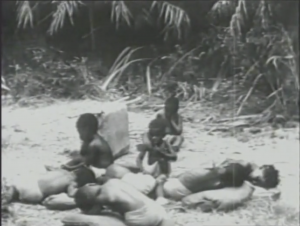
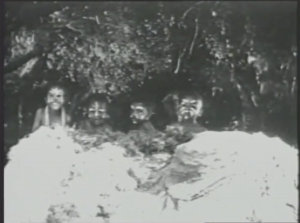
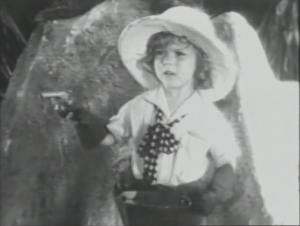
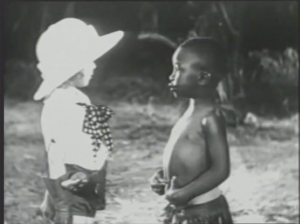
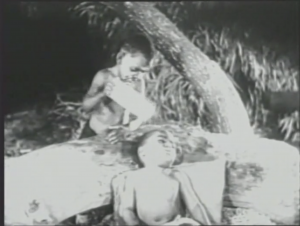
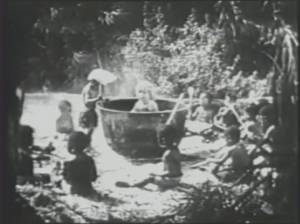
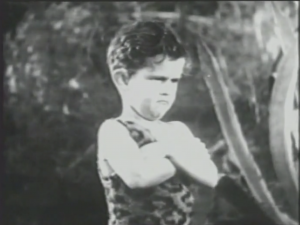
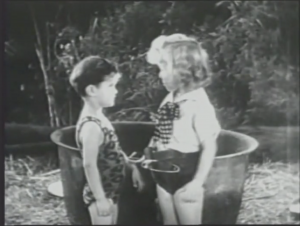
table of contents
Shirley Temple A Kid 'in' Africa: An Illustrated Summary and Critique
Exercise
The following images and texts are a narrated series of stills from Kid ‘in’ Africa starring Shirley Temple.
- Please review them and, using concrete examples, explain how this film exemplifies Eurocentric ideologies.
- Include in your analysis not only racism and colonialism, but the role of patriarchy and speciesm in these scenes.
Kid ‘In” Africa starring Shirley Temple as Madame Cradlebait is a short American comedy film produced in 1933.The film shows colonized Black children as porters, a group of Black children depicted as “cannibals,” a White girl who leads an expedition, and a White boy, Tarzan.
Temple marches in followed by a line of porters trailing behind her. They pause so the camera can focus in on the cargo labeled “Madam Cradlebait Missionary. Cannibal Taming Expedition. Civilize the Cannibals or Bust.”
Temple comes to a halt, rests her hand on her hips, and wipes her forehead as if she has been working hard. She points her finger at the ground and all of the porters immediately sit on the ground following her command.
The “cannibals” emerge out of the jungle with their teeth bared and their bodies covered in mock tribal markings. They are pictured here peeking over the bushes at Shirley Temple and the porters.
Upon seeing the “canibals” emerge from the bushes, Shirley Temple shrieks “cannibals!”. She then draws a gun out of her holster and points it at them.
One of the porters comes up to Temple and suggests they all flee the scene. Shirley Temple says “No, these cannibals must be civilized!”
The “cannibals” run around shaking salt on the heads of the sleeping porters accompanying Shirley Temple.
Shirley is seen inside the cooking pot shouting for help. She appears to have been captured by the “cannibals.” One of the “cannibals” is wearing a chef hat and stirring the pot with a spoon.
Then enters the young White boy mimicking Tarzan. He beckons an elephant and rides into the scene to save Shirley Temple. Upon seeing him standing there with his arms crossed, all the”cannibals” flee the scene screaming.
Shirley Temple steps out of the pot, grabs Tarzan’s hand and says “Oh goodie, now you can help me civilize these terrible cannibals. We’ll have a civilized city– right here in the jungle.”